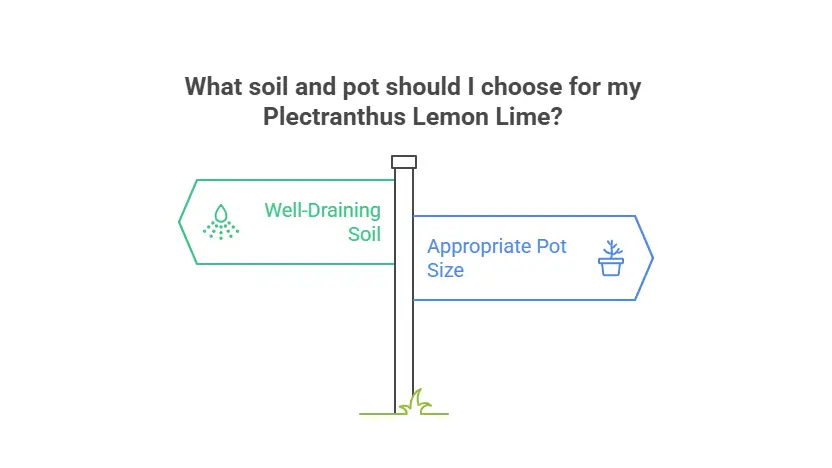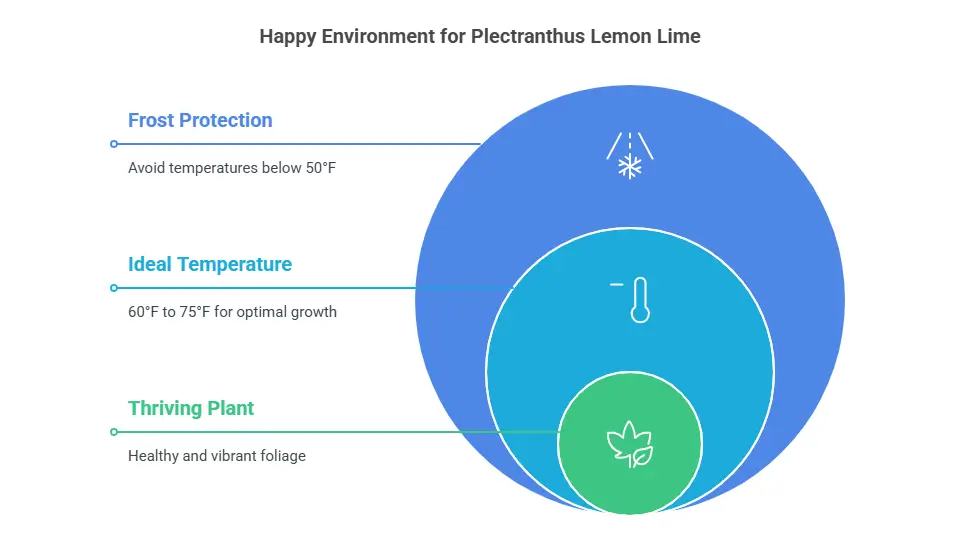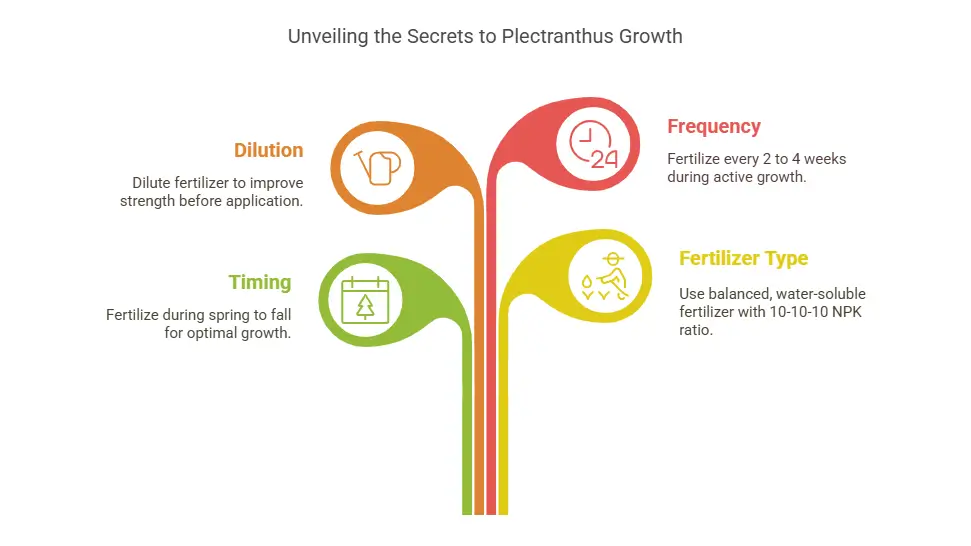There’s a certain joy that comes from inviting a bit of the outdoors into our living spaces, isn’t there? And what better way to infuse your home with a fresh and lively feel than with a plant boasting truly radiant foliage? The delightful hues of lemon and lime on the leaves of what’s often called the plectranthus lemon lime houseplant bring a spark of sunshine to any corner.
Table of Contents
Brightening Your Home with the Cheerful Plectranthus Lemon Lime
Now, it’s worth noting that the name “plectranthus lemon lime” isn’t always a strict botanical designation. You might find this cheerful plant referred to by various names, and it can sometimes encompass several species within the Plectranthus genus, all cherished for their vibrant, often variegated, leaves. Some may even be cousins, like the Hemizygia ‘Lemon Lime’, which shares that lovely coloration.
But regardless of the precise scientific label, these plants share a wonderful characteristic: their ease of care coupled with their fast-growing nature and attractive trailing habit. This makes them particularly well-suited for gracing window boxes, cascading from hanging baskets, or adding a lively touch to your favorite containers.
These plectranthus lemon lime houseplants not only add visual appeal with their bright yellow-green and often patterned leaves, but some varieties also offer a subtle, refreshing aroma, hinting at their place within the mint family (Lamiaceae). Whether you’re a seasoned plant enthusiast or just beginning to cultivate your indoor garden, the plectranthus lemon lime houseplant is a fantastic choice for bringing a touch of natural vibrancy indoors.
In this guide, we’ll delve into the essential care tips you need to ensure your plectranthus lemon lime houseplant thrives and continues to bring its cheerful presence to your home. We’ll cover everything from finding the perfect light to mastering the watering routine, ensuring you have all the knowledge to enjoy lush and healthy growth.
1. Light Up Their Lives: Providing the Perfect Brightness for Your Plectranthus Lemon Lime

Just like us, our leafy companions respond beautifully to the right environment, and when it comes to the vibrant plectranthus lemon lime houseplant, light is a key ingredient for their happiness and those cheerful hues we so admire. Providing the proper illumination is crucial for ensuring your lemon lime plectranthus not only survives but truly thrives, showcasing its delightful variegation.
Generally speaking, the plectranthus lemon lime houseplant flourishes in bright, indirect light. Think of it as the gentle, diffused sunlight you’d find near a window, but not directly in its path. This type of light allows the plant to photosynthesize effectively, fueling its growth and maintaining the intensity of its lemon-lime foliage.
While these adaptable plants can tolerate less than ideal conditions, including some shade, you might notice a subtle difference in their appearance. The beautifully variegated leaves may lose some of their vibrant yellow or creamy tones, becoming more predominantly green if they aren’t receiving enough light.
It’s important to be mindful of direct sunlight, especially during the intense midday and afternoon hours. Harsh rays can be too strong for the delicate leaves of the plectranthus lemon lime houseplant, leading to leaf burn, characterized by scorched or bleached spots. When growing your lemon lime plectranthus indoors, an east-facing window that provides gentle morning sun or a west-facing window with filtered light can be ideal. A south-facing window can work too, but be sure to diffuse the strong sunlight with a sheer curtain.
Conversely, insufficient light can also hinder the health and beauty of your plectranthus lemon lime houseplant. If your plant isn’t getting enough light, you might observe the stems becoming leggy as they stretch towards any available light source. The once bright lemon and lime foliage may also appear dull and less vibrant.
As the seasons change, so too does the intensity and duration of daylight. During the darker winter months, even a spot that was once brightly lit might become somewhat dim.
You may need to reposition your plectranthus lemon lime houseplant closer to a window or consider supplementing with a grow light to ensure it continues to receive adequate illumination. Observing your plant closely will tell you if it’s getting the light it needs to keep those leaves happy and vibrantly colored.
2. Quenching Their Thirst: The Art of Watering Your Plectranthus Lemon Lime

Finding the right balance when watering your plectranthus lemon lime houseplant is essential for its ongoing health and vibrant appearance. Too much or too little moisture can lead to various problems, so understanding this aspect of care is paramount for a thriving plant.
The general rule of thumb for watering your lemon lime plectranthus is to water when the top inch of the soil feels dry to the touch. This simple test helps prevent overwatering, which is a common pitfall for many houseplants, including the plectranthus lemon lime houseplant. Overly wet soil can lead to root rot, a serious condition where the roots are deprived of oxygen and begin to decay. Signs of root rot can include yellowing leaves, wilting, and a general decline in the plant’s vigor.
When it’s time to water, water thoroughly until excess water drains from the bottom of the pot. This allows the root ball to absorb water evenly, maintaining proper hydration throughout. Be sure your pot has drainage holes to prevent water from sitting at the bottom, which can contribute to root rot. If your decorative pot lacks drainage, it’s wise to place the plant in a nursery pot inside the decorative one and always empty any excess water that accumulates after watering.
How often you water depends on multiple variables such as:
- The time of year: During the active growing season in spring and summer, your plectranthus lemon lime houseplant will likely need more frequent watering than in the cooler, less active fall and winter months. Reduce watering during winter.
- Light levels: Plants in brighter locations tend to dry out more quickly than those in lower light conditions.
- Temperature and humidity: Warmer temperatures and lower humidity levels can increase the rate of evaporation, requiring more frequent watering. Conversely, higher humidity may mean the soil stays moist for longer.
- Pot size and material: Plants in smaller pots or terracotta pots (which are porous) may need watering more often than those in larger plastic pots.
- Soil type: A well-draining soil mix, often recommended for the plectranthus lemon lime houseplant, will dry out faster than a dense, moisture-retentive soil.
Pay attention to the signals your lemon lime plectranthus gives you. Wilting leaves can indicate either underwatering or overwatering (due to root rot). Assess the soil’s dampness to identify the issue: Dry soil signals a need for hydration; if moist, delay watering until the soil dries slightly.
It’s also worth noting that allowing the soil to dry out completely for extended periods can stress your plectranthus lemon lime houseplant, potentially leading to slowed growth and browning leaf edges. The key is to find that sweet spot of consistent moisture without sogginess.
By observing your plectranthus lemon lime houseplant and adjusting your watering routine based on these factors, you’ll be well on your way to keeping it happy and hydrated.
3. A Cozy Bed: Choosing the Right Soil and Pot for Your Plectranthus Lemon Lime

Providing the right foundation for your plectranthus lemon lime houseplant starts with selecting the appropriate soil and container. Think of it as creating a cozy and supportive bed that will encourage healthy roots and vibrant growth. Getting these elements right can make a significant difference in the overall well-being of your cheerful plant.
When it comes to soil, the key for a happy plectranthus lemon lime houseplant is excellent drainage. These plants, while they appreciate consistent moisture, are quite susceptible to root rot if their roots sit in soggy conditions for too long. Therefore, a well-draining potting mix is essential.
You can enhance the drainage of a standard potting mix by incorporating perlite or sand into the blend. A ratio of about 70% potting soil to 30% perlite or sand can work well. This will help ensure that excess water can escape easily, preventing waterlogged roots. The ideal soil pH for your lemon lime plectranthus is generally between 6.0 and 7.0, which is typical for most good-quality potting mixes.
Now, let’s consider the pot. The most crucial feature of any container for your plectranthus lemon lime houseplant is drainage holes. These openings at the bottom of the pot are vital for allowing excess water to escape after watering, safeguarding the roots from rot. Whether you choose a terracotta, plastic, or ceramic pot, ensure it has adequate drainage. If you opt for a decorative pot without drainage, it’s best to use a nursery pot inside it and always empty any accumulated water after watering.
The pot size significantly influence plant health and growth. When initially potting a young plectranthus lemon lime houseplant, a pot that is 4 to 6 inches in diameter is often a good starting point. As your plant grows, you’ll need to repot it into a larger container to accommodate its expanding root system.
A good rule of thumb when repotting is to select a pot that is at least 2 inches larger in diameter than the previous one. Signs that your plant needs repotting include roots emerging through drainage openings or coiling densely around the container’s interior. Spring is generally a good time for repotting.
For trailing varieties of plectranthus lemon lime, which are often favored for their cascading habit, hanging baskets or pots placed on shelves are excellent choices. If you choose a taller, upright variety, a heavier pot like terracotta might be beneficial to provide stability and prevent the plant from tipping over.
By paying attention to the type of soil and the pot you choose, you’re setting your plectranthus lemon lime houseplant up for a healthy and vibrant life, allowing it to bring its cheerful colors and lively presence to your home.
4. A Happy Place: Perfecting Temperature and Humidity for Your Plectranthus Lemon Lime

Creating a truly happy environment for your plectranthus lemon lime houseplant involves more than just light and water; temperature and humidity play crucial roles in their overall health and the vibrancy of their cheerful foliage. Understanding these needs will help your lemon lime plectranthus flourish and maintain its delightful appearance.
Generally, the plectranthus lemon lime houseplant thrives in average household temperatures, typically ranging between 60°F and 75°F (15°C to 24°C). It’s important to be mindful that these plants are sensitive to frost. Protecting your lemon lime plectranthus from temperatures below 50°F (10°C) is essential; bringing it indoors during colder months is often recommended if you live in a region with significant temperature drops.
Extreme temperatures, whether hot or cold, are not ideal for your plectranthus lemon lime houseplant. Sudden changes in temperature can also cause stress. While they can tolerate brief periods of cooler temperatures, prolonged exposure to cold can lead to problems. Similarly, in very hot conditions, the plant may require extra attention, such as increased watering and protection from intense sunlight, to prevent stress.
Humidity is another important factor in keeping your plectranthus lemon lime houseplant happy. These plants generally prefer moderate to high humidity, ideally around 50% to 70%. Indoor environments, especially during winter when heating systems are in use, can often become quite dry. Low humidity can lead to issues like leaf curling and shriveling.
To increase humidity for your lemon lime plectranthus indoors, consider a few simple techniques:
- Misting the leaves regularly with a spray bottle can provide a temporary boost in humidity.
- Placing the pot on a pebble tray filled with water (ensuring the bottom of the pot isn’t sitting directly in the water) allows for evaporation that increases the humidity around the plant.
- Using a humidifier in the room can help maintain consistent and optimal humidity levels, especially during dry periods.
- Grouping your houseplants together can also create a more humid microclimate as plants naturally release moisture through transpiration.
Maintaining the right balance of temperature and humidity, along with appropriate light and watering, will contribute significantly to the health and vibrant beauty of your plectranthus lemon lime houseplant. Observing your plant for any signs of stress, such as wilting, browning leaf edges, or loss of color, can provide clues about whether adjustments to its environment are needed.
5. A Little Boost: Fertilizing for Lush Growth of Your Plectranthus Lemon Lime

While your plectranthus lemon lime houseplant isn’t a heavy feeder, providing it with the right nutrients at the appropriate times will certainly encourage lush growth and maintain the vibrancy of its attractive foliage. Think of fertilizing as offering a little boost to help your cheerful plant thrive.
During the active growing season, which typically spans from spring to fall, your lemon lime plectranthus will benefit most from supplemental feeding. A balanced, water-soluble fertilizer with an NPK ratio of 10-10-10 is generally suitable for a plectranthus lemon lime houseplant. Some sources also suggest a 10-20-10 fertilizer. It’s always best to dilute the fertilizer to improve its strength before application. Feeding every 2 to 4 weeks during this active period should be sufficient.
In the fall and winter months, as your plectranthus lemon lime houseplant enters a period of slower growth, it requires less frequent feeding. You can reduce or even suspend fertilization during this time. Applying too much fertilizer during dormancy risks soil salt accumulation, potentially damaging the plant.
Look for signs that your lemon lime plectranthus might need a little boost. These can include:
- Yellowing leaves.
- Slowed or stunted growth.
- Leaves that are smaller or weaker than usual.
- A lack of vibrancy in the leaf color.
- Absence of flowers if your particular Plectranthus variety is known to bloom.
- Wilting leaves.
However, be aware that yellowing leaves can also be a sign of overwatering or poor drainage, so always consider other factors as well.
Over-fertilizing can also cause problems for your plectranthus lemon lime houseplant. Signs of over-fertilization can include:
- Leaf burn or brown spots on the edges of the leaves.
- Wilting.
- Darkening of leaf color.
- Salt buildup visible as a white crust on the soil surface or the pot’s rim.
To prevent salt buildup, you can occasionally flush the soil by watering thoroughly until water runs freely from the drainage holes several times in a row. Repotting your plectranthus lemon lime houseplant into fresh soil every year or two will also help prevent excessive salt accumulation.
When applying fertilizer, always water your plant after feeding to help distribute the nutrients throughout the soil. Remember that healthy soil, proper watering, and adequate light are the foundational elements for a thriving plectranthus lemon lime houseplant. Fertilizing is simply an extra step to support its vigorous and colorful growth during its active season.
Bonus Tips for Thriving Growth of Your Plectranthus Lemon Lime Houseplant
Beyond the essentials of light, water, soil, and the right pot, a few extra steps can truly elevate the health and beauty of your plectranthus lemon lime houseplant. These bonus tips will help your cheerful plant flourish and bring even more joy to your indoor garden.
- Regular Pruning for Bushier Growth: Don’t hesitate to pinch back the stems of your lemon lime plectranthus, especially when it’s young. This simple practice encourages the plant to branch out, resulting in a fuller, more compact shape rather than a leggy one. You can use clean pruning shears to snip just above a leaf node. These cuttings can even be used to propagate new plants, expanding your collection.
- Rotate for Even Light Exposure: To ensure all sides of your plectranthus lemon lime houseplant receive adequate light, rotate its pot every few weeks. This prevents one side from becoming stretched or pale as it reaches for the light source, leading to more balanced and vibrant growth.
- Keep a Watchful Eye for Pests: Regularly inspect the leaves and stems of your lemon lime plectranthus for any signs of common houseplant pests like spider mites or aphids. arly detection of pest problems simplifies containment and treatment efforts. Look for webbing, tiny dots that move, or sticky residue on the leaves.
- Dust Those Leaves: Just like any other surface in your home, the leaves of your plectranthus lemon lime houseplant can accumulate dust. Gently wipe the leaves with a damp cloth every so often. This simple step helps the plant to photosynthesize efficiently, leading to healthier growth and more vibrant leaf color.
- Consider Different “Lemon Lime” Varieties: Keep in mind that “lemon lime” isn’t always a specific scientific name but often a common descriptor for Plectranthus and even related species with similar bright, variegated foliage. Exploring different cultivars like Plectranthus verticillatus ‘Golden Lemon’ or Hemizygia ‘Lemon Lime’ can introduce exciting variations in leaf texture and color to your indoor garden.
- Easy Propagation for More Plants: The plectranthus lemon lime houseplant is quite easy to propagate, primarily through stem cuttings. When you’re pruning, don’t discard the healthy cuttings! Simply place them in water or directly into moist, well-draining soil, and with a little care, you’ll soon have new lemon lime plectranthus plants to enjoy or share.
By incorporating these additional care tips, you’ll be well on your way to nurturing a thriving and beautiful plectranthus lemon lime houseplant that adds a touch of cheerful greenery to your living space.
Troubleshooting Common Plectranthus Lemon Lime Issues
Even with the best care, you might occasionally encounter a few hiccups while growing your plectranthus lemon lime houseplant. Recognizing these common issues early and understanding how to address them will keep your cheerful plant looking its best.
One frequent concern is yellowing leaves. This can stem from several factors. Excessive watering frequently causes oversaturated soil, which may result in root decay. Ensure your pot has adequate drainage and allow the top inch or two of soil to dry out before watering again.
Conversely, underwatering can also stress your lemon lime plectranthus and cause yellowing. Maintain a consistent watering schedule, adjusting based on the season and your home’s environment. Nutrient imbalances, either from over-fertilizing or under-fertilizing, can also manifest as yellowing leaves. During the active growing season (spring to fall), a diluted, balanced fertilizer every 2-4 weeks is generally sufficient.
Finally, poor drainage leading to salt buildup in the soil can also cause yellowing; occasionally flushing the soil with water can help.
Another issue you might observe is leaf burn or brown spots. This is often a sign of too much direct sunlight, which can scorch the delicate foliage of your plectranthus lemon lime houseplant. These plants generally prefer bright, indirect light. Adjusting your plant’s location can resolve this. Inconsistent watering, leading to periods of drought followed by overwatering, can also cause brown leaf edges.
Wilting leaves can indicate either underwatering or overwatering. Test the soil’s dryness to pinpoint the underlying issue. Sudden temperature changes or drafts can also lead to wilting as the lemon lime plectranthus experiences shock. Maintaining a consistent temperature range of 60°F to 75°F (15°C to 24°C) is ideal.
A loss of vibrant color in the leaves of your plectranthus lemon lime houseplant, where the characteristic lime green or yellow hues become dull or entirely green, usually points to insufficient light. Ensure your plant receives bright, indirect light for at least 4-6 hours daily.
Keep an eye out for pests such as aphids, mealybugs, and spider mites, which can be attracted to the soft foliage. Inspect the undersides of leaves regularly for any signs of infestation like webbing or sticky residue. Minor infestations can often be managed by wiping the leaves with soapy water or using neem oil. Proper airflow around plants helps minimize pest infestations.
Root rot, indicated by wilting despite moist soil and potentially dark, mushy roots, is typically a result of prolonged overwatering or poorly draining soil. Ensure your pot has drainage holes and use a well-draining potting mix. If root rot is present, carefully remove any affected roots and repot the lemon lime plectranthus in fresh, dry soil.
Finally, leaf curling and shriveling can occur when the air is too dry or if the plant is experiencing intense light that draws too much moisture. Boost moisture levels using misting, pebble-filled trays, or a humidifier to create a healthier environment. Also, assess if the light intensity is too high.
By carefully observing your plectranthus lemon lime houseplant and understanding these common issues and their solutions, you can ensure it continues to thrive and brighten your home with its cheerful foliage. Remember that a balanced approach to light, watering, temperature, and humidity is key to preventing most problems.
Conclusion: Enjoying Your Flourishing Plectranthus Lemon Lime
With a little attention to its needs, your plectranthus lemon lime houseplant can truly thrive, bringing a splash of vibrant color and trailing beauty to your indoor space. Remember that providing the right environment is key.
This cheerful lemon lime plectranthus appreciates bright, indirect light, mimicking its native tropical habitat. Select a fast-draining soil mix and a container equipped with drainage holes—essential steps to avoid waterlogged conditions and root decay, frequent challenges in indoor plant care.
Consistent watering, allowing the top inch of soil to dry out between waterings, will keep your plectranthus lemon lime houseplant hydrated without becoming waterlogged. During the active growing season, a diluted, balanced fertilizer can offer a gentle boost, encouraging lush growth. Don’t forget the simple yet effective bonus tips like regular pruning to maintain a bushy shape and rotating the pot for even light exposure.
Should you encounter any common issues, such as yellowing or browning leaves, revisiting the sections on watering, light, and fertilization can often provide the solution. And as your lemon lime plectranthus grows, consider the ease with which it can be propagated through stem cuttings, allowing you to expand your collection or share this delightful plant with friends.
Often referred to as Swedish ivy, this versatile houseplant is relatively low-maintenance and rewards your care with its attractive foliage. By understanding its basic needs for light, water, and soil, you can create an environment where your plectranthus lemon lime houseplant will flourish. So, take a moment to appreciate the vibrant hues and trailing growth of your thriving plant, a testament to the simple joys of indoor gardening.

